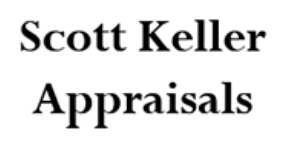A live weekly radio adventure through Indiana history with host Nelson Price.
You can listen to WICR anywhere on your mobile device or at home on your smart speaker. Go to www.wicronline.org to listen live. You can also ask your smart speaker to "play WICR" OR "play 88.7 the Diamond".
January 14, 2023
Delphi town history

 Because of a tragedy, a picturesque town with a Greek name (unusual for Indiana) has been in the national news for nearly six years. That’s often obscured the colorful heritage that Delphi in northern Indiana has reclaimed in captivating ways, including cruises on a portion of the former Wabash & Erie Canal, restored historic structures and a park showcasing the waterway’s heritage, that have made the city a popular destination for visitors.
Because of a tragedy, a picturesque town with a Greek name (unusual for Indiana) has been in the national news for nearly six years. That’s often obscured the colorful heritage that Delphi in northern Indiana has reclaimed in captivating ways, including cruises on a portion of the former Wabash & Erie Canal, restored historic structures and a park showcasing the waterway’s heritage, that have made the city a popular destination for visitors.
Hoosier History Live will spotlight Delphi (population. 2,975), the county seat of Carroll County, where, from May through September, visitors enjoy cruises on The Delphi, a replica of a 19th century canal boat. We also will look at the history of some sites associated with the tragedy, the murders of two girls in February 2017, as well as the Canal Interpretive Center, which includes an interactive museum, and restored buildings such as the Delphi Opera House. Not only did James Whitcomb Riley, the Hoosier poet, perform at least six times at the opera house, he also visited the Delphi area to enjoy fishing and other leisure activities.
 Nelson’s guest will be Carroll County historian Mark A. Smith. He is a docent at the Reed Case House, a grand, Federal-style home built in the 1840s by the contractor of the region’s section of the Wabash & Erie Canal, which was constructed to connect Toledo on Lake Erie with Evansville on the Ohio River. The Reed Case House eventually became an inn for travelers and canal workers.
Nelson’s guest will be Carroll County historian Mark A. Smith. He is a docent at the Reed Case House, a grand, Federal-style home built in the 1840s by the contractor of the region’s section of the Wabash & Erie Canal, which was constructed to connect Toledo on Lake Erie with Evansville on the Ohio River. The Reed Case House eventually became an inn for travelers and canal workers.
The heyday of the canal era was brief (railroads eclipsed the canals, among other factors), and the prolonged, arduous construction of the canals was blamed for a financial crisis in Indiana during the 1850s. The Wabash & Erie Canal left the state $1 million in debt. As a result, the canal in Delphi for many generations was regarded as a source of shame or scorn and even used as a dumpster, residents have said.
But more than 25 years ago, the town began reclaiming its proud canal heritage, with the creation of a pioneer village anchored by the Reed Case House (which is available for tours) and a water-filled portion of the canal enabling the maiden launch of The Delphi in 2009. During the boat cruises on 40-minute journeys, costumed re-enactors often provide commentary explaining the importance of the canals (comparing them to today’s interstate highways) in transporting cargo and passengers during the 1840s and ‘50s.

Also during our show, Mark also will briefly recap the history of the Monon High Bridge, an abandoned railroad trestle bridge where Abigail Williams, 13, and Libby German, 14, were hiking before they were murdered. He also will discuss amenities added since the tragedy to the Freedom Bridge, including kiosks with cameras. The Freedom Bridge, which is 302 feet, goes across (above) the Hoosier Heartland Highway (SR 25) and is used by pedestrians, including hikers, in the Delphi area. Mile markers and paved trails also have been created in the area, Mark reports.
A lifelong Carroll County resident, Mark has deep ancestral roots in the county and is a graduate of Delphi High School and Indiana State University. He leads the Heritage Keepers, a group that does presentations and tours of local historical sites.
Mark says the initiative to reclaim the heritage of the canal era began in the 1970s and slowly gained steam as residents cleaned up the waterway. Other projects followed, including the renovation of the Delphi Opera House, which had been built in 1897 and was used for public gatherings as well as concerts, lectures and performances by touring theater troupes. After shocking deterioration for decades, the Delphi Opera House’s roof was replaced in 2010 along with an extensive renovation; the building is listed on the National Register of Historic Places.
At the Canal Interpretive Center, the museum features interactive exhibits as well as maps and oil paintings that depict historic sites about the Wabash & Erie Canal. The water-filled portion of the canal where The Delphi cruises is uniformly just under 5 feet deep. The speed limit for canal boats during the 1840s and ‘50s was 6 mph.


 Guest Roadtripper Bob Jacobsen, who calls himself a
Guest Roadtripper Bob Jacobsen, who calls himself a 





